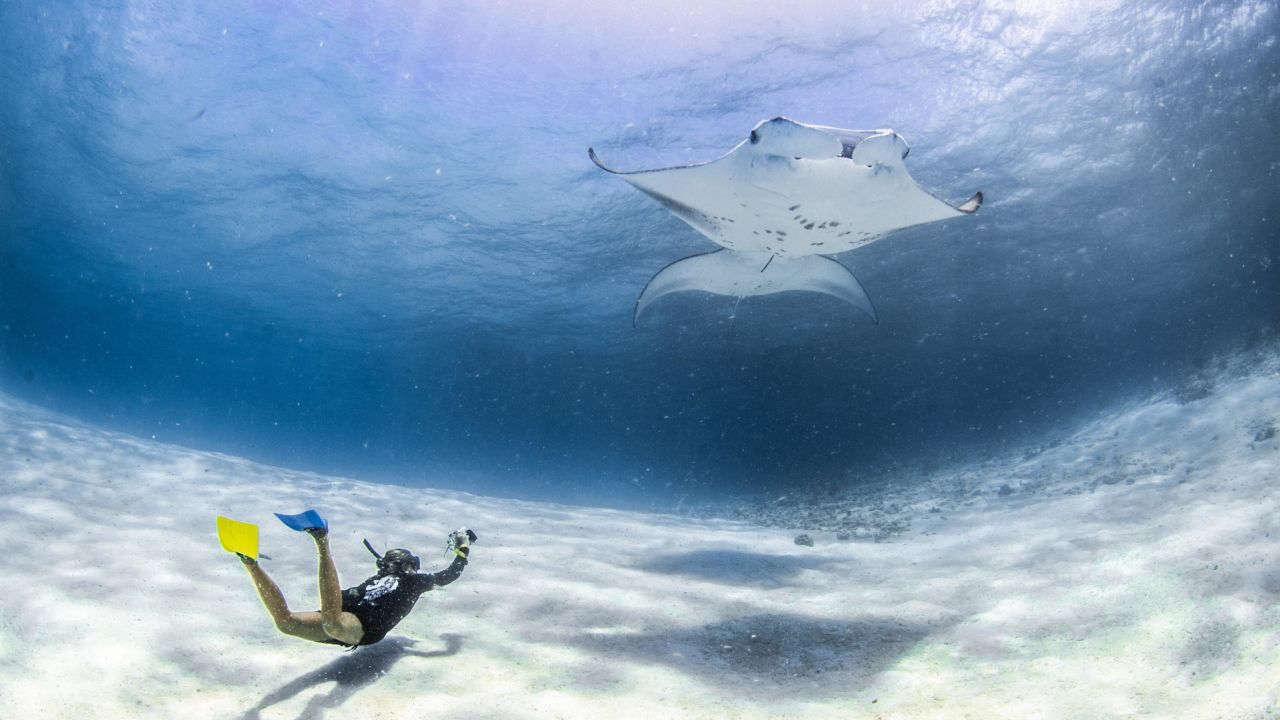As Beth Faulkner bobbed up and down in the Maldives’ Hanifaru Bay, she did some quick mental math.
“There’s probably about 100,” she said in reference to the number of reef manta rays swimming just below her. “Usually it’s about 50 to 60.”
Faulkner is a project manager at the Manta Trust, a conservation and research charity that studies these gentle giants. Close relatives of sharks, the largest mantas have wingspans that can reach over 20 feet. Unlike their stingray cousins, which can deliver deadly injuries, mantas are harmless, according to Faulkner.
“They have no sting, no teeth, nothing they can do to hurt humans. So they’re absolutely wonderful to swim with in the water.”
Although manta rays pose no danger to us, people are doing terrible damage to them. According to the International Union for Conservation of Nature, the global population of reef manta rays is declining, mainly due to fishing, habitat degradation and global warming.
Caught in the net
Commercial fishing is among the biggest threats to mantas, which are both targeted and accidentally caught in nets.
“Because they’re such a slow growing animal, and it takes a long time for them to reproduce, this fishing pressure can cause the population to deplete very quickly,” says Faulkner.
Additionally, demand for manta rays for use in traditional Chinese medicine – has grown across Asia over the last decade.
It’s tough to say how many mantas are out in the wild today, but the largest recorded population can be found just on Faulkner’s doorstep in the Maldives, in the Indian Ocean. Her team tracks each individual in a database, which has recorded over 5,100 reef mantas to date, Faulkner says.
“Just like humans have different fingerprints, manta rays have different spot patterns,” says Faulkner. By photographing them, the team can track the mantas without having to tag them, which is “less invasive and causes them less stress,” she explains.
Manta data
A typical day for Faulkner and her team begins by gathering research equipment from the Manta Trust office, which is based at the Four Seasons Laanda Giraavaru resort. From there, the four women head out into the waters surrounding a group of islands called Baa Atoll. They’re looking for manta rays in spots where they gather to feed and be cleaned by smaller fish that eat parasites off their bodies. In addition to photographing each individual, they’ll also perform ultrasounds on pregnant mantas, to monitor the health of their pups, and collect measurements.
The aim is to gather details about “the way mantas live, how they survive, how they utilize the environments around them in order to have that evidence, which backs up why we need to protect them,” explains Faulkner.
Faulkner’s team isn’t alone. The Manta Trust works with over 20 affiliate projects across the world. In 2020, the charity’s work helped lead to the protection of manta habitats in the Maldives and two other tropical archipelagos, Seychelles and Palau.
For Faulkner, these efforts are all part of a much larger picture.
“Everything has its place,” she says, adding that when species are removed from an ecosystem, it can completely disrupt the way that ecosystem works. “So it’s not just about protecting the mantas alone – it’s about protecting the entire ecosystem.”














